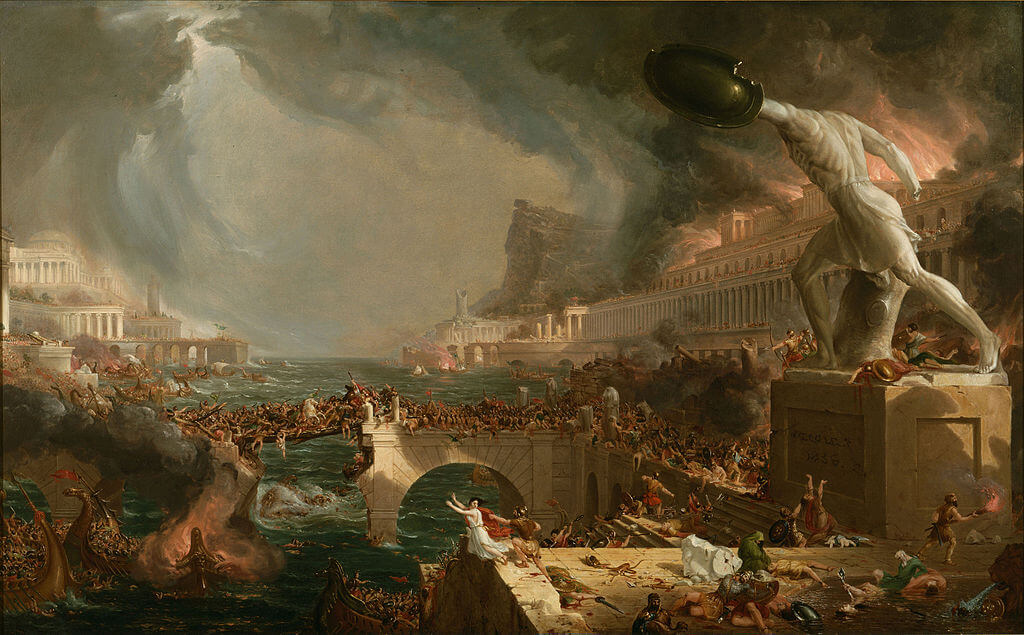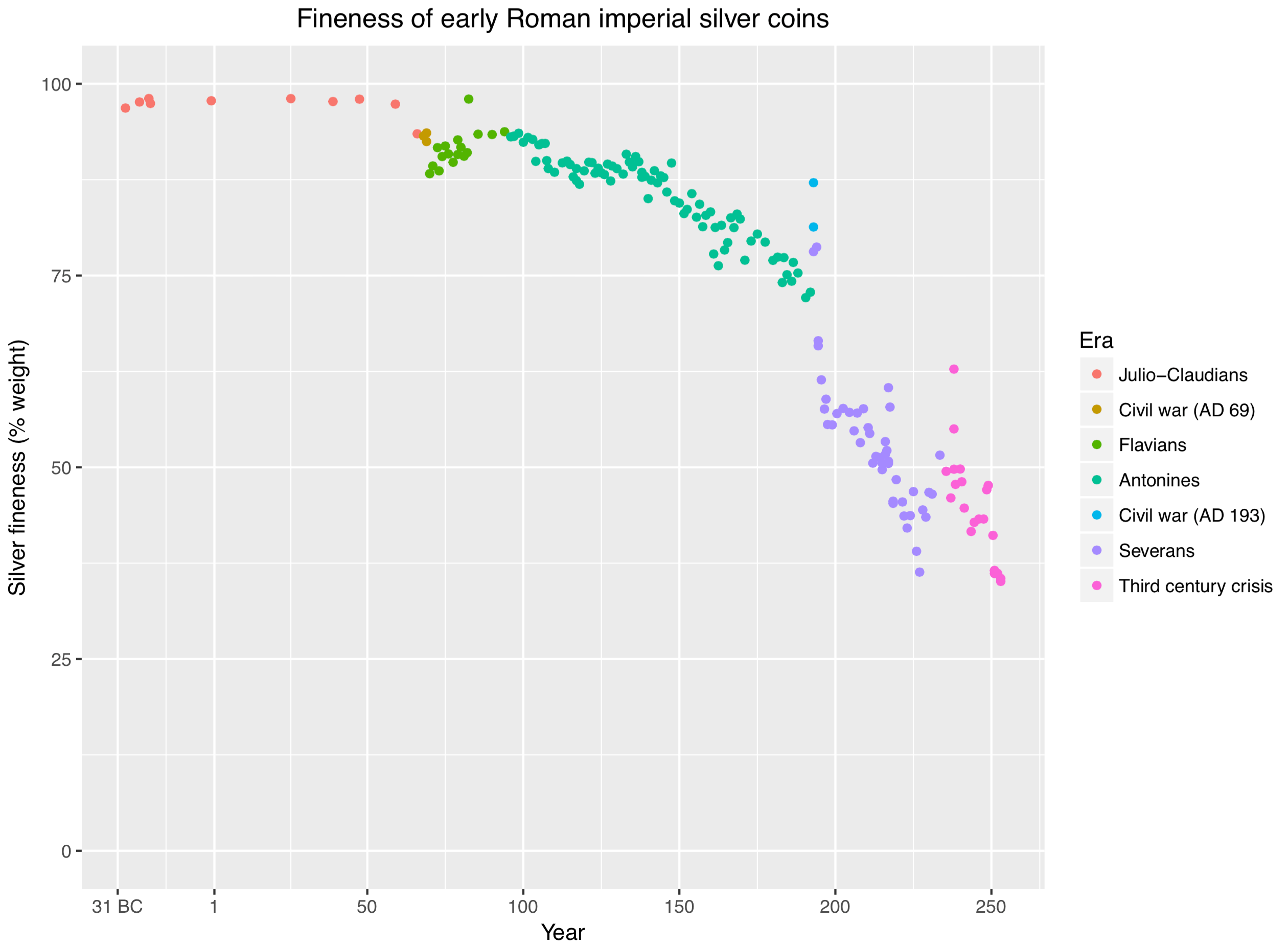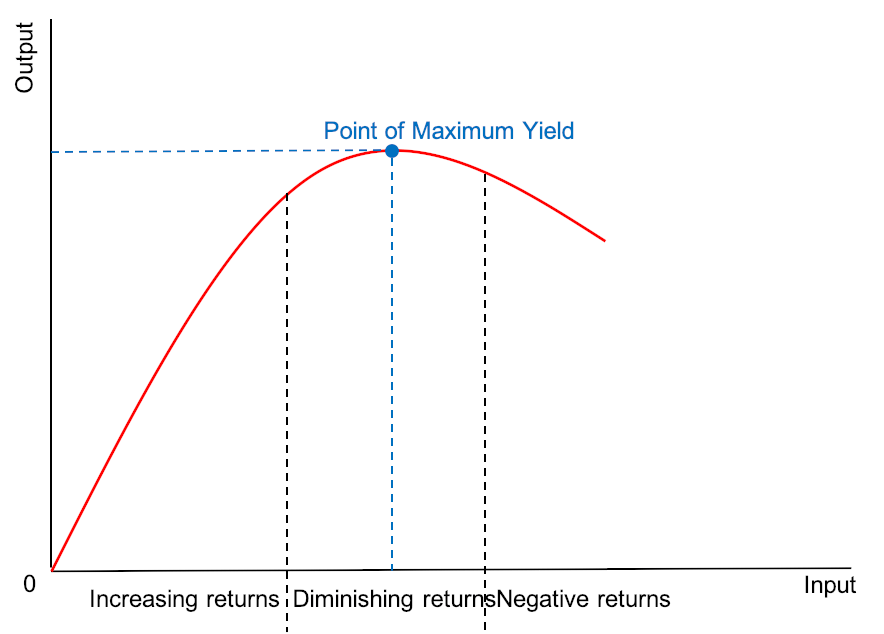Collapse: Limits to Sustainability
It is no secret that we’re living in uncertain times. Inflation is at the highest rate since 1982, energy prices are exploding, markets are in turmoil. The crypto market has seen a strong pullback driven by the early May Terra Luna depegging and its ultimate collapse. Second order effects are at work now and layoffs have begun. This is the perfect time to review The Collapse of Complex Societies by Dr. Joseph Tainter.
Complex Societies
What we call civilization, is the culture and traditions of complex societies. We think of civilization in terms of art, science and literature. What underlines all of these are institutions. Institutions such as the government, business and informal organizations.
The evolution of social complexity concerns a change from small to large distinctions within. For example, from biological differences of age and sex, to highly integrated and division of labour. Think from hunter gatherer societies to todays 20 thousand or so different kinds of occupations in existence. Differentiation in structure is what we call great proliferation of social roles and institutions. In other words, as societies are becoming more complex, there are more parts and more kinds of parts to it.
The many parts of society that require rules to bind together to function as a whole. This means increased integration and control of behavior.
A collapse means, a society rapidly loses an established level of complexity. As in, a rapid simplification. Organization becomes more local. In the past, we refer to these periods as “dark ages” as knowledge, literacy and literature was lost.
Complexity isn’t free, it comes at a cost in terms of energy expenditure. In non-human systems we count this cost in calories. Among humans, we measure energy expenditure in monetary terms and friction. Friction can be understood as annoyances that are created by the governing rule system that imposes control on the parts. Before the age of fossil fuels, people had to work harder to support the level of complexity at their time. Our modern standards of living are in fact subsidized by fossil fuels.
A healthy society we have to think of it as a balance of benefits to cost. This balance changes over time and usually deteriorates over time.
Given cost increases, there is no natural inclination of humans to increase complexity of societies. However, our systems become more complex because it has great utility in problem solving and thereby value creation. Complexity on the other hand, undermines the long term sustainability of said problem solving efforts.
This added value creation comes at great expenses in form of energy. Cheap energy permits and supports higher complexity. Dr. Joseph Tainter calls this the energy complexity spiral. This post is based on his book The Collapse of Complex Societies A key example of this is the collapse of the west Roman empire. The collapse emerged from problem solving efforts.
The Collapse of the Roman Empire

The Romans greatly expanded state budgets with conquered territory. They would seize accumulated surpluses of output, thereby disallowing the indigenous population from overgrowing and absorbing the value output into their own state. One could argue that agricultural output is in effect solar energy. This energy was transformed into food, people, precious metals and art. The feedback loop was positive as more conquests funded more conquests. Loot and pillage can only be done once every so many years.
With conquests coming to a halt, the empire had to transition from one of gaining accumulated solar energy to living of current solar energy output. On top of this, structures needed to be created to administer acquired land and people.
This is very similar to our transition from accumulated fossil fuels to sustainable, solar energy (wind, etc.).
Debasement and Inflation
The currency of Rome was the Denarius, which was 99% pure silver in the 1st century AD. Gold on the other hand was merely a store of wealth. The financial system was thereby commodity backed. When cost of war with the Parthians exploded and Rome burned during the time of Nero, economic reforms were necessary in the form of currency debasement.

We can see that there were reforms, for example around the years 190 AD. They were however not successful as government spending and military cost were inexorable. In 238 the coin Antoninianus was introduced with less weight and a government decree that it was worth twice as much as the previous coin. Allowing the government to double their profits within the empire.
Other reforms under Diocletian and Constantine started in 284 to subdivide provinces to deprive provincial governors of the resources to rebel. This was a major complication since the new provinces created all duplicated the administration of the other provinces. Goin from a handful of administrations and provinces to multiple dozens greatly increases the size of the government. The number of capitals increased too, next to Rome in the West there were Constantinople in the East, Trier in Germany, Milan in Italy. Each of these capitals required palaces and staff. Most importantly, the size of the army was doubled, primarily for expensive cavalry to quickly move against incursions from enemies. If this wasn’t enough, taxes were doubled by 300 AD. Tax assessments were also made on expected profits rather than actual profits. A tax burden of 50% on a peasant population is high and its execution created hardships.
The Cost of Roman Sustainability
The Romans tried to sustain their empire and society. But inevitably, the laid out measures caused inflation. The population started to decline. When plagues or famines wiped out part of the population in the 2nd and 3rd century, society didn’t had the breathing space to recover. Partly because taxes were so high that families had no reserves. This caused shortages of labour in many areas. Currency debasement had to continue to keep the empire afloat.
The Roman empire survived the 3rd century by consuming its capital resources, its land and peasant population. The empire went from living off interest of their annual production of land and population, to living off their capital. Reducing land and population. The collapse was inevitable and came from the effort to solve problems.
Sustainability
Sustainability means maintaining a desired state or condition. It emerges from peoples values and is the science of continuity.
Sustainability is not a passive consequence of consuming less. Conservation doesn’t produce sustainability. Sustainability is an active effort of problem solving and requires resources. Thereby, it requires greater consumption, not less.
Innovation is not a solution
Innovation is not a characteristic of human history, but a recent phenomena. In the Paleolithic period (the stone age), hundreds of thousands of years went by without innovation. Nowadays product cycles are short with constant updates and upgrades. Industrialized nations allocate ~3% GDP to research and development.
Contrary to common believe, innovation is not the key to future prosperity. The believe is that as resources become scarce, new resources and technologies will emerge and substitute.
An Alternative View on Innovation
Innovation is subject to the dynamics of all living things. It grows in complexity and costliness and exhausts easy solutions to problems.
The productivity of innovation isn’t constant. It grows increasingly complex and thereby more costly. Nicholas Rescher from the University of Pittsburgh argues that the cost of innovation not only grows in absolute terms, but also relative. In the share of percentage of GDP and human capital allocated. Complexity creates a boundary as increasing cost causes diminishing returns.
The Future of Innovation

Productivity of innovation is declining and it requires more and more resources in form of money and human capital for research and development. Innovation continues only by taking resources from other sectors.
Derek de Solla Price whom we know from the square root law projected in the 60s that scientific doomsday is less than a century away. We may be entering a phase of an economy in a steady state or in decline.
Conclusion
Sustainability is a function of solving problems which consumes resources. In the face of problems, the cost of sustainability increases. The Western Roman Empire achieved two centuries of sustainability before it collapsed. The Easter Roman Empire also known as the Byzantine Empire, managed a radical simplification and survived for the most part after 660 AD. By 1000 AD they had recovered most of their land and they were the premier power of Europe and the near East. An accomplishment by simplifying. From an energy perspective the Byzantine Empire simplified their energy flows and went from a central government to localized, decentralized control where much of the cost was eliminated. This was however not a voluntary simplification but forced due to externalities as the Empire was under thread of collapse. There are no other examples of large historical societies that have managed to sustain themselves through a series of problems with increasing cost by simplification.
Humans did not evolve to be broad thinkers in terms of time and space. In the long run, sustainability seems impossible and it appears all societies must collapse.
As for the solution scope, we have to start by spreading awareness and improve education so future generations are thinking about our impact and future as a society. How things connect to each other and affect our lives.
The biggest problem we have to solve shorter term is to develop new sources of clean, abundant and affordable energy. Energy is the key to everything that we humans do and it enables us to solve a lot of other problems.
What we owe to the future is opportunity. It is important that we have regard for the future. The future is, where our children will live. I rarely end a post with a quote, but here it is fitting.
In valor there is hope – Tacitus
Published on Sunday, Jun 5, 2022. Last modified on Sunday, Jun 19, 2022.
Go back